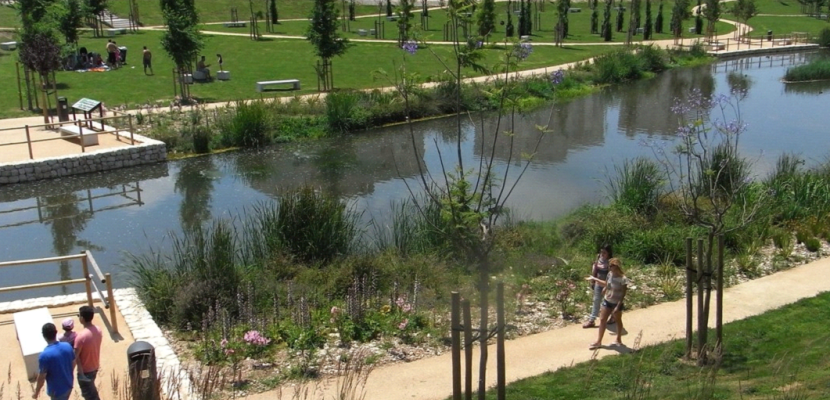
‘La Marjal’ floodable park

About this good practice
The urban park of ‘La Marjal’ is ready for temporary accumulation of rainwater, and designed to store excess water beyond the capacity of the existing drainage system in the city. This excess water is discharged into the sea when the drainage system partially or fully regains its evacuation capacity. Additionally, it serves as a reservoir for water used in functions such as garden irrigation.
It was designed and created, covering an area of 36,700m2 and built on land designated as a green zone according to the city's Urban Development Master Plan. Its construction, along with the installation of two large collectors, was accomplished by the public-private corporation that handles water supply and wastewater in the city of Alicante.
In case of a highly intense episode of rain, the flow of water circulates through the existing rainfall network. When the collector system functional capacity is surpassed, the water will begin to reach the park, filling it after overflowing the side channel, designed for this purpose.
The environment created in the park mimics a wetlands ecosystem. The pond is surrounded by a fringe of vegetation of aquatic and marsh species, favouring the nesting of birds and shaping a natural marsh landscape. The floodable area of the park has river tree species, and on the higher part a Mediterranean landscape has been recreated with autochthonous plant species. Furthermore, the existence of explanatory panels makes this space an educational resource.
Expert opinion
Resources needed
The park required the investment of 3,6 M€, accomplished by the municipal water service ‘Aguas Municipalizadas de Alicante’. It is half-owned by Alicante City Council, the service provider, and half-owned by Hidraqua, Gestión Integral de Aguas de Levante S.A.
Evidence of success
Since it was opened in 2015, the park has come into operation in different intense rain episodes, preventing the flooding of the nearby urban areas. Between 2015 and 2021, the total storage volume has been 54,300 m3, with a maximum in 2019 of 24,000 m3.
The water stored after an intense rainfall episode is raised by the pumping station annexed to the park to the water treatment plant for its reuse. The management of this water resource has increased the supply of reclaimed water in Alicante.
Potential for learning or transfer
This serves as an example manual demonstrating how a nature-based solution can be a realistic approach to addressing flooding issues while simultaneously revitalizing urban spaces. The potential for sharing this best practice is exceptionally high. Virtually any European city can benefit from the experience of creating green spaces that establish ecosystems with high environmental value, all while serving to manage urban water resources. This encompasses not only flood control but also water reuse, stormwater treatment, and the use of separate drainage networks.
In fact, within the region, it has served as an example, and as a result, other similar infrastructures are being planned and developed. The most advanced one can be found in the city of Torrevieja, where drainage issues have been tackled through a series of interconnected floodable parks that, in the event of a flood, function as flood attenuation basins.
